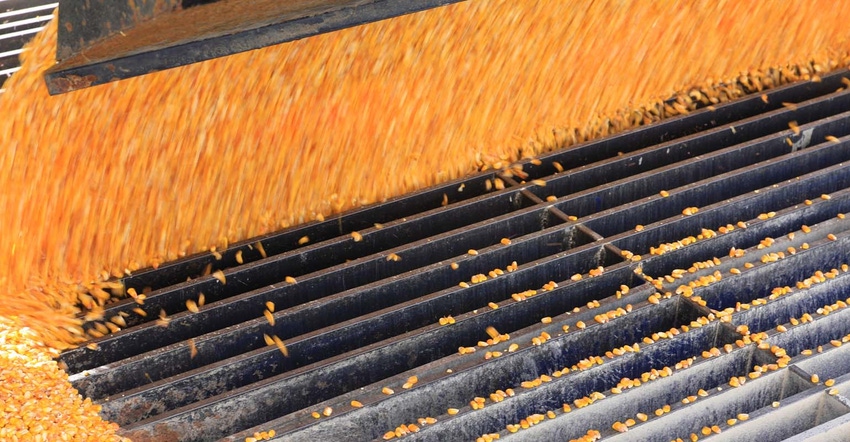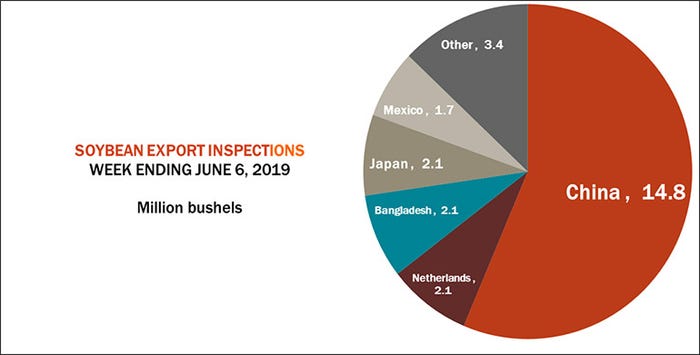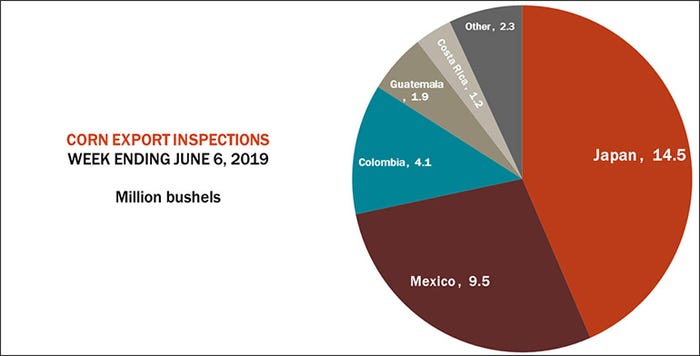
The latest round of weekly grain export inspections proved mostly positive this week, despite some logistical challenges, according to Farm Futures senior grain market analyst Bryce Knorr.
“Export inspections were a pleasant surprise all around this week, given capacity constraints in the export pipeline cause by flooding on the river system,” he says. “Shippers continue to move soybeans out of other ports to avoid lack of arrivals at the Gulf. In addition to good traffic out of the Pacific Northwest, this included a cargo bound for the Netherlands out of Toledo, which helped boost basis at the northwest Ohio port.”

Soybean totals of 26.3 million bushels for the week ending June 6 fell below the weekly rate needed to match USDA forecasts, but it also showed Chinese buyers continuing to take delivery of previous purchases, Knorr notes. Last week’s tally also moved slightly ahead of the prior week’s total of 18.8 million bushels and exceeded trade estimates ranging from 16 million to 23 million bushels. Marketing year-to-date totals of 1.284 billion bushels continue to trend 26% below the pace of 2017/18, however.
“China took 14.8 million bushels, reducing its large book of unshipped purchases to around 230 million bushels,” Knorr notes. Other top destinations last week included the Netherlands (2.1 million), Bangladesh (2.1 million), Japan (2.1 million) and Mexico (1.7 million).


“With the river system north of St. Louis unlikely to fully open until late June, look for a rush of movement that could keep corn and wheat sidelined this summer,” Knorr adds.
Corn export inspections also moved moderately higher week-over-week after clearing another 33.5 million bushels. That was on the high end of trade estimates that ranged between 19 million and 35 million bushels. Still, the weekly rate needed to match USDA forecasts moved higher, to 51.3 million bushels, with 2018/19 year-to-date totals falling 2% below the prior marketing year after reaching 1.582 billion bushels.
“That trend should continue as buyers seek corn out of South America into the fall to make up for lower 2019 U.S. production,” Knorr says.
Japan led all destinations for U.S. corn export inspections last week, with 14.5 million bushels. Other top destinations included Mexico (9.5 million), Colombia (4.1 million), Guatemala (1.9 million) and Costa Rica (1.2 million).


Today’s report also included the first six days of the 2019/20 marketing year for wheat, Knorr says. Old crop exports should reach USDA’s forecasts, but it’s too early to get much of a feel for new crop deliveries until more is known about the quality and quantity of harvests across the globe, he says. Wheat export inspections last week hit 17.1 million bushels, which was in the middle of trade estimates ranging between 14 million and 22 million bushels.
Iraq led all destinations for U.S. wheat export inspections last week, with 3.9 million bushels. Other top destinations included Mexico (2.2 million), Taiwan (2.1 million), Algeria (2.0 million), Nigeria (1.8 million), Japan (1.7 million), South Korea (1.4 million) and Thailand (1.0 million).

About the Author(s)
You May Also Like






